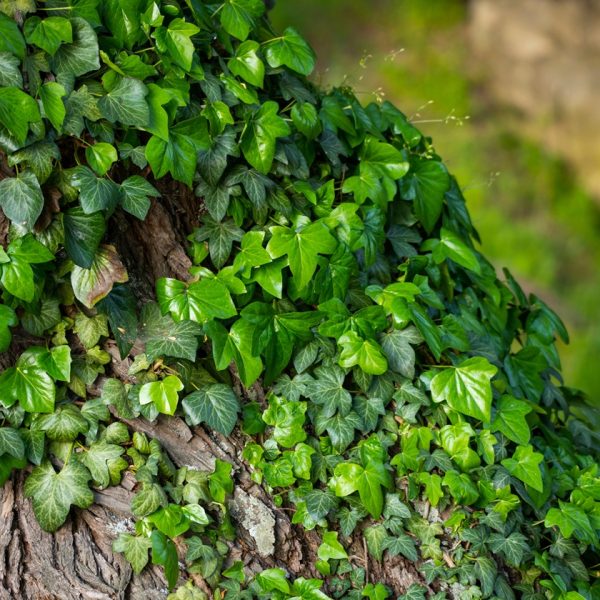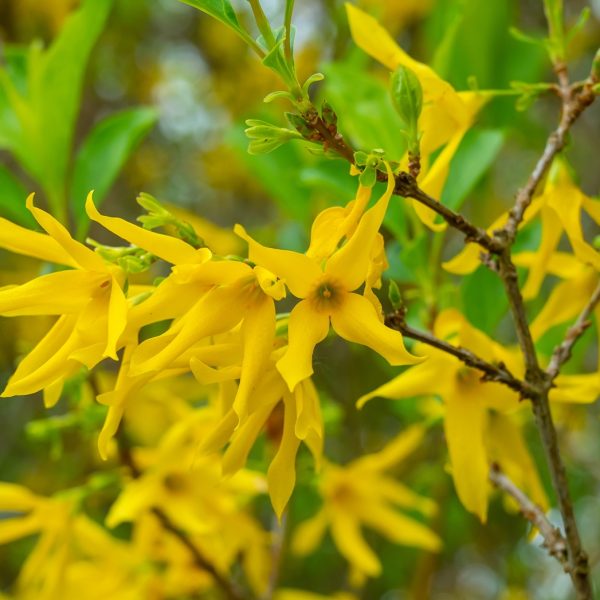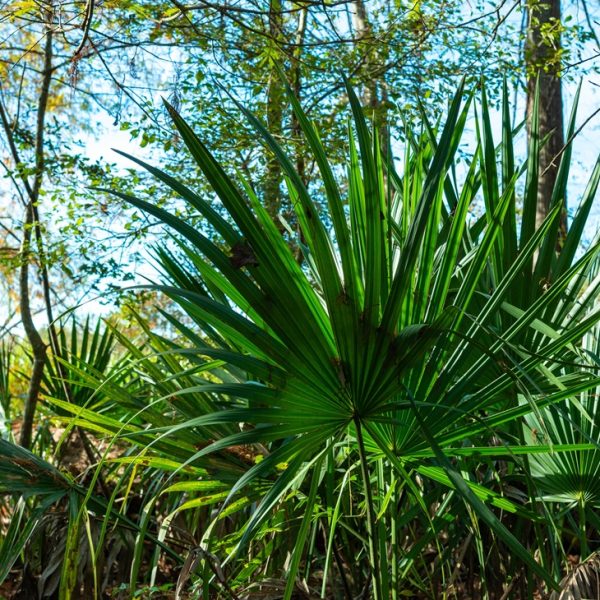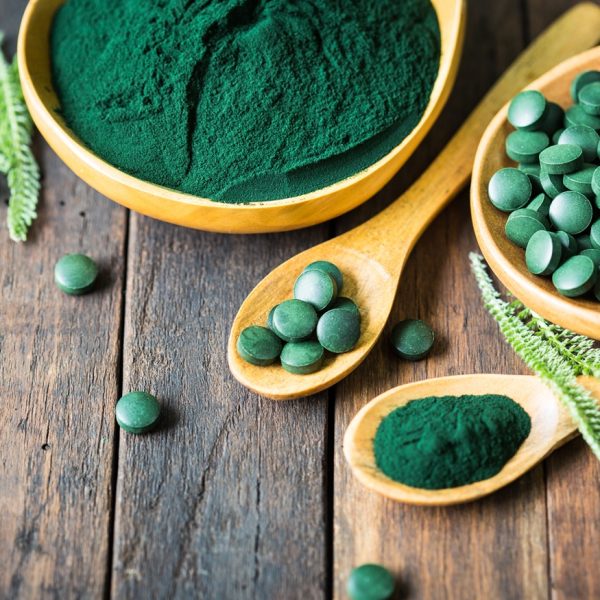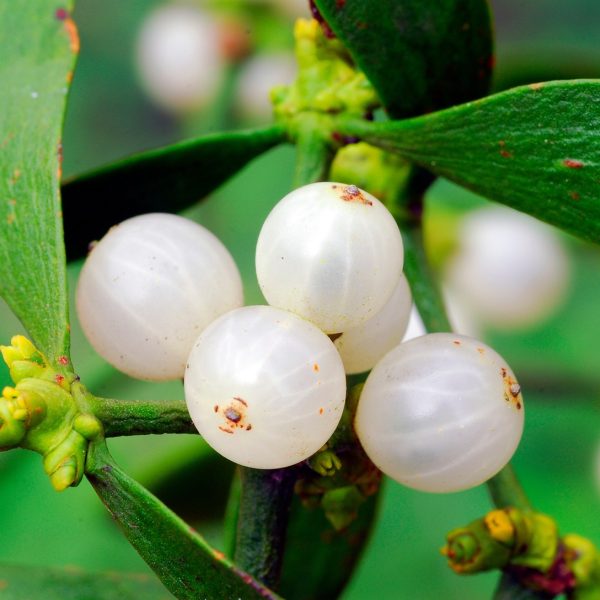MAOI inhibitor enzymes are found in over 70 plants. Matthew Clark explains how MAO inhibitors affect our dopamine, serotonin and adrenaline levels.
Monoamine oxidases

Monoamine oxidases (MAOs) are a family of enzymes* found in the brain, gut, liver and other tissues; they catalyse the oxidation and inactivation of monoamine neurotransmitters, including serotonin, noradrenaline and dopamine, which are important in the regulation of mood.
There are two kinds of MAO: MAO-A and MAO-B. MAO-A is found primarily in the intestine and in the regions of the brain that have serotonin, norepinephrine, dopamine and tyramine substrates; MAO-B is found primarily in platelets and in the regions of the brain that are rich in dopaminergic neurons.
The function of MAO inhibition was discovered in 1958 (22). Drugs that suppress MAO-A in the brain have been used as anti-depressants since then. These drugs remain far longer in the system than plant-based sources. MAO inhibitors (MAOIs) inhibit the MAO enzyme, thereby allowing serotonin, norepinephrine and dopamine to accumulate in the synapse (5). Mood changes induced by MAOIs can also be aphrodisiac, and the plants considered below are sometimes used for that purpose in various cultures around the world.
* Oxidases are enzymes that utilize molecular oxygen as acceptor, and convert phenolic substances to quinones.
Plants containing monoamine oxidases inhibitor (MAOI)

Around seventy plants are now known to contain monoamine oxidase inhibitors (MAOIs) (3).* The list of plants known to contain chemicals that have this function augments nearly annually. Below, we consider nine plants that contain MAOIs (22).**
Two of the plants, Syrian rue and yagé, are used mainly for psychoactive effects. Passion flower, nutmeg, liquorice and fragrant ginger contain MAOIs, though they are used primarily as food and in folk medicine, rather than for inebriation. The other three plants discussed (caltrop, cowhage and heart-leaved moonseed), are used mainly in Āyurvedic medical treatments and for aphrodisiac purposes.
* Ott (1994:73–75) lists sixty-seven plants in nineteen botanical families with MAO-inhibiting ß-carbolines.
** Other commonly used plants that have MAOI properties, to varying degrees, include betel nut (Areca catechu) and yohimbe (Pausinytalia johimbe) [MAO-A inhibitors]; kava (Piper methysticum), olives (Olea europaea) [MAOI-B inhibitors]; black pepper (Piper nigrum), long pepper (Piper longum) cannabis (Cannabis sativa), cocoa (Theobroma cacao), coffee (Coffea arabica, Coffea canephora), golden root (Rhodiola rosea), tobacco [MOA-A and MAO-B]. See Psychonautwiki 2021.
Syrian rue (Peganum harmala)

One of the MAOI plants that has a very long history of use is Syrian/mountain/ wild rue (Peganum harmala) (35). This plant belongs to the Zygophyllaceae botanical family and is known as harmal/harmel (in Arabic) or as isphand/isfand/spand/sipand more widely in the Middle-East and Asia. In Egypt it is known as besata (‘Plant of Bes’) and in Morocco as mejnenna, which means ‘what makes your crazy/possessed’*. It is probably the MAOI plant most widely used for its psychoactive, aphrodisiac and medicinal properties.
In Iran and neighbouring regions, the seeds of Syrian rue are still used for apotropaic purposes, and as an aphrodisiac—sometimes in the form of an extracted oil—by Turks, Moroccans, Tunisians and others (35). The shamans of Hunza, in the mountains of northern Pakistan, inhale the vapours of rue, which they call supándur, to ‘call the spirits’ during their trance (9,35). The inhalation of thick smoke from burning seeds is also mentioned in classical Persian poetry (35).
The angular, reddish brown seeds of rue are usually boiled before being crushed, producing a reddish extrusion, which is used as a traditional dye for cloth and carpets. The seeds contain almost equal quantities of the alkaloids harmine, harmaline, and tetrahydroharmine (THH), which are ß-carboline derivatives, all belonging to a class of compounds that act as monoamine oxidase inhibitors (MAOI). The effects of harmine, harmaline and tetrahydroharmine are similar but not identical.
Effects of harmaline
In a pioneering study, Naranjo conducted psychotherapeutic sessions with thirty volunteers in 1964 to test the effects of harmaline (9). The drug is described by Naranjo as ‘oneirophrenic’ (dream-inducing). It induces a state of relaxation and a tendency to withdraw from the environment, to keep eyes closed, and to want all sounds to be kept to a minimum (20). It lowers blood pressure and may also induce sleep. Naranjo found the benefit of harmaline to lie primarily in allowing psychotherapeutic access to unconscious processes and imagery. Although not strictly a psychedelic, in large doses rue can produce semi-psychedelic visionary experience, though accompanied by nausea and vomiting (20).
* There is archaeological evidence from the Caucasus region of its use, probably as an intoxicant that was burnt and inhaled, which dates from the 5th millennium BCE (Sherratt 1995:30). In the 3rd millennium BCE, rue appears in a Mesopotamian cuneiform text as šibbaratu, in a section on poisoning (Scurlock 2014:636). Around 2,000 years ago, the Copts in Egypt used rue primarily as a medicine to treat skin diseases, worms and ‘sick testicles’ (Manniche 199:145). Rue was well known to physicians in the classical Greco-Roman world. Pliny the Elder (23–79 CE) considered rue (ruta) to be among the chief medicinal plants, with numerous applications, and also as one of the main ingredients of antidotes to poisoning (Natural History 20.153). Dioscorides (c. 30–90 CE) records several, similar applications to those of Pliny, and notes that the wild or mountain varieties are referred to as moly by Cappadocians and others (De Materia Medica 3.51–54) (2000:423–428).
Yagé (Banisteriopsis caapi vine)
The Banisteriopsis caapi vine, which is in the Malpighiacea botanical family, grows principally in the Amazon region of South America, where it is usually known as yagé; it is also cultivated these days in several countries in South America and in other tropical regions, such as Hawaii. It is another rich source of MAOIs, though as a percentage of volume it is not quite as rich as in Syrian rue. Some varieties of the vine also contain traces of DMT and 5-MeO-DMT (see below).
The vine is used alone for its psychoactive effects by some groups, such as the Tukano in north-west Amazonia. It is macerated and left to stand in cold water, which is then drunk (1,6,12,13,51). Other groups, such as the Matsigenka tribe of the Manu region of Peru, boil the vine until it attains a honey-like consistency; sometimes tobacco or other plants are added. From the 1960s onwards they began to add Psychotria viridis (usually known as chacruna), which contains NN-dimethyl tryptamine (DMT), which produces a psychedelic effect (1,19,22,25,40,52).
The formula comprising the Banisteriopsis caapi vine and Psychotria viridis, plus additional booster/moderator plants is the basis of the psychedelic/entheogenic concoction known as ayahuasca, a powerful psychedelic concoction.Torres (38) maintains that although some tryptamine-containing plants have been in use in South America since 2000 BCE, there is no evidence for use of the Banisteriopsis caapi vine for making ayahuasca before the initial contact with Europeans, c.1550–1650.
Ayahuasca analogues
Even though plants containing MAOIs are psychoactive on their own, one of the functions of MAOIs is that if taken together with a plant containing tryptamine alkaloids, such as psilocybin mushrooms or NN-dimethyl tryptamine (DMT), then the psychedelic effects of the tryptamines are augmented (45). Ott lists sixty-two plants with one or more of nineteen psychedelic/entheogenic tryptamines (52). If a plant containing the tryptamine DMT is consumed orally it has no effect unless a plant containing MAOI is consumed at the same time. The MAOI effect permits the DMT to be activated and potentially induce powerful psychedelic/entheogenic effects for approximately two to four hours.
Because many plants contain either MAOIs or DMT it is possible to make analogues of ayahuasca from many kinds of plants (22), though not all plants are suitable as they may also contain toxins. It should also be noted that the use of MAOIs can be dangerous, even fatal (3,4).
It is impossible to know when humans first made use of plants that acted as analogues of ayahuasca. In the modern era, the scientific discovery of the chemistry of the entheogenic effects of the combination of DMT with an MAOI is attributed to the research of Holmstedt and Lindgren, which was published in 1967 (32); but in 1955 William Burroughs had already alerted the great botanist Richard Schultes to the importance of the importance of the combination of Psychotria viridis and the Banisteriopsis caapi vine, to produce the ‘fireworks’ of the yagé experience (23,25,27,24), which information Schultes presented at a conference in Los Angeles in 1967 (2).* Nevertheless, apart from a few isolated reports, it was not until the 1980s that a significant body of research began to be published on ayahuasca analogues (sometimes referred to as ‘anahuasca’) (15,41).**
One of the consequences of the diffusion of this information, partly as a consequence of the widespread use of the internet since the 1990s, is a global trend—albeit conducted by a small number of people—to experiment with combinations of various kinds of tryptamines, such as psilocybin mushrooms and Mimosa tenuiflora (containing DMT), with other plants, such as Syrian rue, which contain MAOIs. Samorini (2019) has coined the term ‘X-huasca’ for these novel combinations.***
* Lees (2016:108–112). See also St John (2015:20–34) for a comprehensive account of Burroughs’ engagement with DMT.
** Notable amongst publications that have contributed to a wider understanding of this phenomenon are those of McKenna et al. (1984a; 1984b); Gracie and Zarkov (1985); Ott (1994; 1996a; 1996b; 1997b; 1999), Rätsch (2005) [1998]:716–720; DeKorne et al. (2002) [2000], and Keeper of the Trout (2002 [1993–2001]; 2004a [1998–2001]; 2004b [1997]). See, particularly, Ott (1994).
*** Turner (1994:62–72) also reports on the potentiating effect of rue with other psychedelics; Ott (1994:65) notes how β-carbolines can enhance the effects of peyote. See also Clark (2020:147–163; 2021:18–29).
Passionflower (Passiflora incarnata)

The genus Passifloraceae contains twelve genera and around 600 species (51,22,3,4), which are evergreen, climbing vines, most of which are tropical plants native to Central and South America. Since the 18th century, many varieties have been cultivated worldwide. In pre-Columbian times, Indians used the plant as food, for medicine and as a sedative. The fruits can be particularly delicious. Mild, sedative teas are traditionally made in Amazonia made from several varieties of passionflower; in European folk medicine the plant is also prescribed for this effect and also as an aphrodisiac, hence the name ‘passion flower’.
Ott lists fifteen species of passion flower, including Passiflora incarnata, that contain MAOIs (46). Harman is by far the most widespread MAO-inhibiting ß-carboline in passion flower (22). The roots of Passiflora involucrata are used in the region of Iquitos in Peru as a constituent of an ayahuasca analogue. Research indicates that the main active constituents of passion flower are C-glycosylflavones, apigenine and luteoline. Smoking passion flower also engenders psychoactive effects, producing a mild, cannabis-like high (22).
Gracie and Zarkov report on bioassays of extractions from Syrian rue, Banisteriopsis caapi and Passiflora incarnata (33). These plants, as expected, significantly potentiated the effects of tryptamines, including DMT, LSD and psilocybin mushrooms. Interestingly, DMT, 5-MeO-DMT, psilocybine and psilocine, besides their effects as tryptamines (which can engender a psychedelic effect) also on their own have MAO inhibition properties (10).
Nutmeg (Myristica fragrans)
The nutmeg tree (Myristica fragrans) is originally from southeast Asia, where it is commonly used as a spice in cooking and also as an aphrodisiac and a medicine (24). The main chemical in nutmeg with MAOI properties is myristicin (34).
In India, nutmeg, known as jāyphal in Hindi, besides being a commonly used spice, is often found in multi-plant Āyurvedic aphrodisiac formulas.
In this capacity, the nut itself is sometimes used separately from the hairy covering of the nut, known as jāypatti or jāvitrī, which is used for making the spice known as mace. Nutmeg was used in Europe in the Middle-Ages as an aphrodisiac. However, consuming large amounts of nutmeg can be poisonous.
Liquorice (Glycyrrhiza glabra)
Used since at least 500 BCE, the Scythians are said to have introduced the sweet root to the Greeks. Liquorice is in the Leguminosae/Fabaceae botanical family and has some aphrodisiac effect (24).
Continuous use can lower metabolism, decrease thyroid function, and deplete potassium. Some varieties of liquorice (Glycyrrhiza glabra/inflata/uralensis) contain chemicals that have MAOI properties, which are still incompletely understood (34).
Fragrant ginger/galangal (Kaempferia galangal)
Another commonly used plant, which is rich in MAOIs, is galangal/aromatic ginger (Kaempferia galangal). It is native to South and South-East Asia and is used in Asian cuisine (52).
Caltrop (Tribulus terrestris)
Tribulus terrestris, known as caltrop, puncture vine, cathead, and as gokṣura in Sanskrit, is another plant containing MAOIs (21), in the form of harmine etc.
It is commonly used in Indian Āyurvedic aphrodisiac formulas and also used by people hoping to increase athletic performance (22).
It is a fruit-producing plant in the Zygophyllaceae botanical family that grows widely in the Mediterranean region, South Asia and South Africa.
Cowhage (Mucuna pruriens)
Mucuna pruriens, usually known as cowhage or Bengal velvet bean, contains not only MAOIs but also DMT and 5-MeO-DMT in trace amounts (43). This plant, in the Fabaceae botanical family, is known in Sanskrit as kappicacchu or ātmaguptā; it also features commonly in Āyurvedic aphrodisiac formulas. It is also used in Āyurveda to treat Parkinson’s disease, as the plant also contains L-DOPA, a psychoactive chemical which is nowadays manufactured in pure form to treat the disease. In Indian folk medicine the plant is also used to treat snakebite.
Heart-leaved moonseed (Tinospora cordifolia)
Tinospora cordifolia (Sanskrit guḍuci/madhuparṇi/soma/amṛta, Hindi giloy, heart-leaved moonseed) contains jatorrhizine, berberine and plamatine, all of which, individually, act as MAOIs (both MAOI-A and MAOI-B. This plant has several Āyurvedic medical applications, including use for diabetes and as an anti-inflammatory (43), and is also a common constituent of multi-plant aphrodisiac formulas.
Conclusion
Plants containing chemicals that inhibit MAO activity have a long history of use by humans in many cultures for their psychoactive and aphrodisiac effects. Although the chemistry of the plants discussed in this article is now well understood, there is still more to be discovered about how these chemicals effect the brain and nervous system.
References
- Beyer, Stephan V. (2010) [1999]. Singing to the Plants: A Guide to Mestizo Shamanism in the Upper Amazon. Albuquerque: University of New Mexico Press.
- Burroughs, William S., and Allen Ginsberg. The Yage Letters. San Francisco: City Lights Books.
- Clark, Matthew (2020) [2017]. The Tawny One: Soma, Haoma and Ayahuasca. London: Aeon Books.
- Clark, Matthew (2021). Botanical Ecstasies: Psychoactive Plant Formulas in India and Beyond. London: Psychedelic Press.
- Culpepper, Larry (2013). ‘Reducing the Burden of Difficult-to-Treat Major Depressive Disorders: Revisiting Monoamine Oxidase Inhibitor Therapy’. The Primary Care Companion For CNS Disorders, vol. 15(5), pp. 1–12. https://www.ncbi.nlm.nih.gov/pmc/articles/PMC3907330/ (accessed 3/08/2021)
- DeKorne, Jim (2011) [1984]. Psychedelic Shamanism: The Cultivation, Preparation and Shamanic Use of Psychotropic Plants, 2nd edn. Berkeley: North Atlantic Books.
- DeKorne, Jim, David Aardvark, and K. Trout (2002) [2000]. Ayahuasca Analogues and Plant-Based Tryptamines (The Best of the Entheogen Review 1992–1999) (ER Monograph Series, No. 1), 2nd edition. Sacramento, California: The Entheogen Review.
- Diocorides, Padanius (trans. Tess Anne Osbaldeston and R. P. A. Wood) (2000). De Materia Medica. Johannesburg: Ibidis.
- Flattery, David Strophlet, and Martin Schwarz (1989). Haoma and Harmaline: The Botanical Identity of the Indo-Iranian Hallucinogen “Soma” and its Legacy in Religion, Language and Middle Eastern Folklore (Near Eastern Studies, vol. 21). Berkeley/Los Angeles/London: University of California Press.
- Gracie and Zarkov (1985). ‘Three Beta-Carboline Containing Plants as Potentiators of DMT and Other Indole Psychedelics, pp. 1–7. (Reprint based on the text of Notes from the Underground: A “Gracie and Zarkov” Reader, vol. II, no. 7), as archived at: https://erowid.org/plants/syrian_rue/syrian_rue_info1_bklt.pdf (accessed 15/11/2019)
- (1985). Notes from Underground: A “Gracie and Zarkov” Reader, vol. II. Gracie and Zarkov Productions.
- Grinspoon, Lester, and James B. Bakalar (1998) [1979]. Psychedelic Drugs Reconsidered. New York: The Lindesmith Centre.
- Jay, Mike (1999). The Blue Tide: The Search for Soma. Brooklyn, New York: Automedia Books.
- Kumar, Pradeep, Madhu Kamle, Dipendra K. Mahato, Himashree Bora, Bharti Sharma, Prasad Rasane, and Vivek K. Bajpai (2020). ‘Tinospora cordifolia (Giloy): Phytochemistry, Ethnopharmacology, Clinical Application and Conservation Strategies’. Current Pharmaceutical Biotechnology, vol. 21, issue 12. DOI: 10.2174/1389201021666200430114547 https://www.eurekaselect.com/181533/article
- Lees, A. J. Mentored by a Madman: The William Burroughs Experiment. London: Notting Hill Editions.
- Manniche, Lise (1999) [1989]. An Ancient Egyptian Herbal. London: British Museum Press.
- McKenna, Dennis K., G. H. N. Towers, and F. Abbott (1984a). ‘Monoamine oxidase inhibitors in South American hallucinogenic plants: Tryptamine and b-carboline constituents of Ayahuasca’. Journal of Ethnobotany, vol. 10, Issue 2 (April), pp. 195–223.
- McKenna, Dennis K., G. H. N. Towers, and F. Abbott (1984b). ‘Monoamine oxidase inhibitors in South American hallucinogenic plants part 2: Constituents of orally-active Myristicaceous hallucinogens’. Journal of Ethnobotany, vol. 12, Issue 2 (November), pp. 179–211.
- Millard, Dale (2018). ‘Broad Spectrum Roles of Harmine in Ayahuasca’. In Ghillean Prance et al. (eds.), Ethnopharmacologic Search for Psychoactive Drugs (50th Anniversary Symposium, June 6–8 2017), vol. 2, pp. 70–81. London/Santa Fe: Synergetic Press, Ltd.
- 20) Naranjo, Claudio (1973). The Healing Journey: New Approaches to Consciousness. New York: Ballantine Books.
- Noro, Tadataka, Toshio Miyase, Masanori Kuroynage, Akira Ueno, and Sego Fukushima (1983) ‘Monoamine Oxidase Inhibitor from the Rhizome of Kaempferia galanga’. Chemical and Pharmaceutical Bulletin, vol. 31, no. 8, pp. 2708–2711.
- Ott, Jonathan (1994). Ayahuasca Analogues: Pangæn Entheogens. Kennewick, WA: Natural Products Co.
- Ott, Jonathan (1995). The Age of Entheogens & The Angels’ Dictionary. Kennewick, WA: Natural Products Co.
- Ott, Jonathan (1996a) [1993]. Pharmacotheon: Entheogenic Drugs, their Plant Sources and History, 2nd edn. Kennewick, WA: Natural Products Co.
- Ott, Jonathan (1996b). ‘Pharmahuasca: On Phenethylamines and Potentiation’. Newsletter of the Multidisciplinary Association for Psychedelic Studies [MAPS], vol. 6, no. 3, Summer, pp. 32–34.
- Ott, Jonathan (1997a). Pharmacophilia or the Natural Paradises. Kennewick, WA: Natural Products Co.
- Ott, Jonathan (1997b). ‘Pharmahuasca, Anahuasca and Vinho da Jurema: Human Pharmacology of Oral DMT plus Harmine’. (Originally published in Yearbook of Ethnomedicine 1997–98). https://pdfs.semanticscholar.org/9f95/8be0924e28f2a2c25e13f7dceb03fc12aa78.pdf
- Ott, Jonathan (1998). ‘The Post-Wasson History of the Soma Plant’. Eleusis, n.s., no. 1, pp. 9–37.
- Ott, Jonathan (1999). ‘Pharmahuasca: Human pharmacology of oral DMT plus harmine’. Journal of Psychedelic Drugs, vol. 31, issue 2, April–June, pp. 171–177.
- Ott, Jonathan (2006). Análogos de la Ayahuasca: Enteógenos Pangeicos. Madrid: Ediciones Amargord.
- Pliny (trans. W. H. S. Jones) (1961). Natural History, Books 20–23, 24–27 (vols. VI and VII, Loeb Classical Library). Cambridge, Massachusetts/London: Harvard University Press/William Heinemann Ltd.
- Psychnautwiki (2021). ‘MAOI’. https://psychonautwiki.org/wiki/MAOI
- Rätsch, Christian (trans. John R. Baker) (2005) [1998, in German]. The Encyclopedia of Psychoactive Plants: Ethnopharmacology and its Applications. Rochester, Vermont: Park Street Press.
- Rätsch, Christian, and Claudia Müller-Ebelling (trans. Aida Sepic Williams et al.) (2013). The Encyclopedia of Aphrodisiacs: Psychoactive Substances for Use in Sexual Practices. Rochester, Vermont/Toronto: Park Street Press.
- Samorini, Giorgio (2019). ‘Peganum Harmala, the “Ayahuasca” of North Africa and Eurasia’. Kahpi: The Ayahuasca Hub (accessed 11/12/2021). https://kahpi.net/syrian-rue-peganum-harmala-ayahuasca/
- Scurlock, JoAnn (2014). Sourcebook for Ancient Mesopotamian Medicine. Atlanta, Georgia: SBL Press.
- Sherratt, Andrew (1995). ‘Alcohol and its Alternatives: Symbol and Substance in Pre-Industrial Cultures’. In Jordan Goodman, Paul E. Lovejoy, and Andrew Sherratt (eds.), Consuming Habits: Drugs in History and Anthropology, pp. 11–46. London/New York: Routledge.
- Shepard, Glenn H. (2018). ‘Spirit Bodies, Plant Teachers and Messenger Molecules in Amazonian Shamanism’. In Ghillean Prance et al. (eds.), Ethnopharmacologic Search for Psychoactive Drugs (50th Anniversary Symposium, June 6–8 2017), vol. 2, pp. 70–81. London/Santa Fe: Synergetic Press, Ltd.
- Snyder, Solomon H. (1986). Drugs and the Brain. New York: Scientific American Library.
- Stafford, Peter (1977). Psychedelics Encyclopedia. Berkeley, CA: And/Or Press.
- St John, Graham (2015). Mystery School in Hyperspace: A Cultural History of DMT. Berkeley, California: Evolver Editions.
- Stolaroff, Myron J. (2004) [1997]. The Secret Chief Revealed. Sarasota, Florida: Multidisciplinary Association for Psychedelic Studies (MAPS).
- Stuart, Annie (2021). ‘Tribulus Terrestris’. WebMD, 29th July. https://www.webmd.com/vitamins-and-supplements/tribulus-terrestris-uses-and-risks
- Toro, Gianluca, and Benjamin Thomas (2007). Drugs of the Dreaming, Oneirogens: Salvia divinorum and other Dream-Enhancing Plants. Rochester, Vermont: Park Street Press.
- Torres, Constantino Manuel (2018). ‘From Beer to Tobacco: A Probable Prehistory of Ayahuasca and Yagé’. In Ghillean Prance et al. (eds.), Ethnopharmacologic Search for Psychoactive Drugs (50th Anniversary Symposium, June 6–8 2017), vol. 2, pp. 36–69. London/Santa Fe: Synergetic Press, Ltd.
- Trease, George Edward, and William Charles Evans (1978) [1934]. Pharmacognosy, 11th edn. London: Baillière Tindall.
- Trout, Keeper of the, et al. (2002) [1993–2001]. Trout’s Notes on Some Simple Tryptamines: A brief overview and resource compendium (Trout’s Notes ♯FS¬- X7, Version 4-2002). Mydriatic Productions/Better Days Publishing.
- Trout, et al. (2004a) [1998–2001] A-5: Ayahuasca: alkaloids, plants & analogs, 2nd edn. [1st edn.: Trout’s Notes on Ayahuasca & Ayahuasca Alkaloids]. https://erowid.org/library/books_online/ayahuasca_apa/ (accessed 9/12/2019).
- Trout, et al. (2004b) [1997]. ‘Trout’s Notes on the Genus Desmodium (Chemistry, Ethnomedicine, Pharmacology, Synonyms and Miscellany), Trout’s notes ♯D- 2 (3-2002). Mydriatic Productions/Better Days Publishing.
- Trout, et al. (2004c). Trout’s Notes: Tryptamine Content of Arundo donax. https://erowid.org/plants/arundo_donax/arundo_donax_info1.shtml (accessed 20/01/2020).
- Turner, D. M. (1994). The Essential Psychedelic Guide. San Francisco: Panther Books.
- Voogelbreinder, Snu (2009). Garden of Eden: The Shamanic Use of Psychoactive Flora and Fauna, and the Study of Consciousness. (Self-published).

